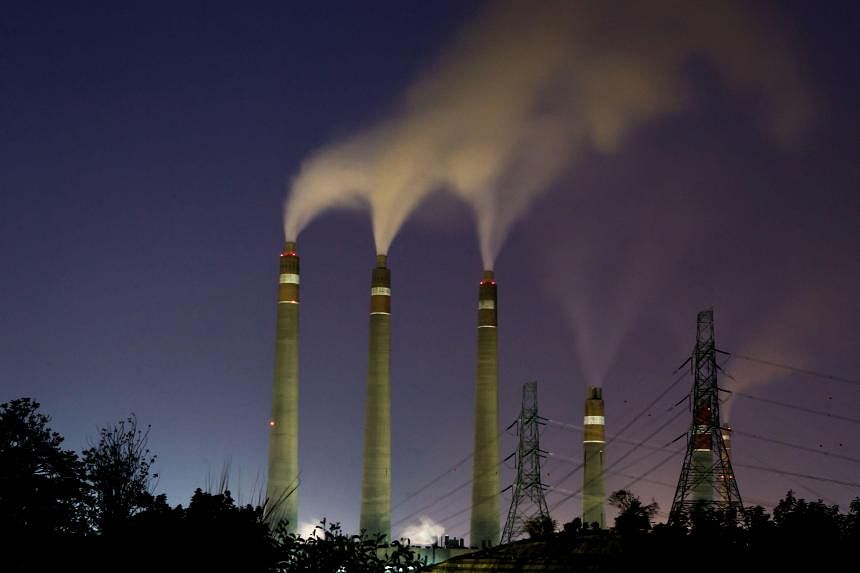SINGAPORE – The central bank in Singapore has set out a clearer picture of how carbon credits can be used to speed up the early retirement of coal-fired power plants, a critical part of Asia’s energy transition.
It has also proposed a template which details how stakeholders can quantify forgone revenues from retiring a coal-fired power plant early, and reduce the economic gap by selling transition credits.
These credits arise from emissions reduced through the plant’s early retirement and replacement with cleaner energy sources. Transition finance is an approach that aims to support companies trying to reduce emissions in accordance with a long-term strategy to decarbonise.
The template includes a cash flow model to determine the gap and a list of standardised documents required to execute such a transaction.
These are among the key outcomes of a working paper jointly published by the Monetary Authority of Singapore (MAS) and consulting giant McKinsey & Company. The document explores the conditions for generating high-integrity carbon credits and identifies what is needed to develop a market for such credits.
Coal power generation remains the single largest source of carbon emissions globally but it is not practical to call for the indiscriminate cessation of coal-fired power plants, said MAS managing director Ravi Menon.
He added: “Asia’s energy demand is growing on the back of significant economic development, population growth and rapid urbanisation.”
There are more than 2,000 coal-fired power plants in the region, with an average age of under 15 years old.
One-fourth of global emissions are from coal power, with three-fourths of this from Asia, said McKinsey senior partner Oliver Tonby, noting that urgent collective action is required to retire young coal plants in the region accounting for over 1,500 gigawatt (GW) of power.
To retire a coal-fired power plant early, it is important to quantify the economic gap and the financing needed for the transaction to be viable, said MAS and McKinsey.
For example, the gap is US$70 million (S$95.8 million) per GW when it comes to retiring a coal-fired power plant with a 1GW capacity five years ahead of the end of its existing power purchase agreement.
It will require about US$310 million per GW in financing, based on the net present value of the existing power purchase agreement.
Revenues from the sale of transition credits could reduce the economic gap from retiring a coal-fired power plant early. However, the credits must be of high integrity and aligned to Core Carbon Principles set out by the Integrity Council for the Voluntary Carbon Market, said MAS and McKinsey.
The principles by the independent governance body define which carbon-crediting programme and methodology types are eligible to be counted towards high-quality credits.
MAS and McKinsey noted that their paper does not aim to develop a new carbon credit methodology for the early phase-out of coal-fired power plants.
Such a methodology should include commitments by host jurisdictions not to build new plants and provide for accurate measurement and monitoring of reduced emissions, they said.
There are also risks and uncertainties from using high-integrity carbon credits to reduce the economic gap from the early retirement of coal-fired power plants, they said.
For example, transition credits will only be issued much later when the emissions reductions are verified.
“A combination of different undertakings could enable greater market adoption of this new form of credits. These include the relevant government’s agreement to enforce coal-fired power plant closures or insurance solutions to mitigate political risk that could lead to delays in the generation of carbon credits,” said MAS and McKinsey.
It is also crucial to mitigate potential harm to livelihoods and communities arising from the early retirement of these plants, they said, adding that this includes factoring in such costs into the financing of early retirement of coal-fired power plants.
Mr Leong Sing Chiong, MAS deputy managing director for markets and development, said that achieving scale for coal phase-outs requires close collaboration among stakeholders, including asset owners, carbon credit buyers and financial institutions.
There is growing understanding of the importance of early coal retirement but actual examples of such transactions in the region are few, he said, citing challenges such as the uneconomical nature of doing so.
He added: “Some stakeholders fear that the phase-out of one coal plant could simply lead to a replacement by another one.
“Financial institutions are concerned that the financing of coal phase-out will impact their ability to meet their net-zero commitments, even though the spike in financed emissions is for a climate positive outcome and has a clear end point by 2040.”
Global research has shown that coal needs to be phased out by 2040 for the world to meet its climate commitments.
MAS invited interested parties to join a coalition of partners to further test the approach under the working paper and identify suitable plants to pilot the use of transition credits.
“This builds on the extensive engagements that were carried out to date with industry practitioners across the carbon credit, energy financing, and project development space,” it said.
The central bank said this year that it will also include the phasing out of coal-fired power plants in a classification scheme it is developing.
Detailed thresholds and criteria for financing the early phase-out of coal-fired power plants will become part of the Singapore-Asia Taxonomy – a framework of standards that determine whether an investment is sustainable.
Mr Jackie Surtani, regional director for the Asian Development Bank’s Singapore office, said pilot projects for early coal retirement are important.
“But we have to create critical mass. We have to bring together all the concessional pools of capital... and ensure that commercial banks see that financing the managed phase-out of coal-fired power plants is very different from financing new coal-fired power plants,” he said at a panel discussion at the launch of the working paper on Tuesday.
DBS group chief sustainability officer Helge Muenkel said current accounting standards for carbon emissions resulting from lending and financing are “fundamentally flawed” because they are backward-looking.
“It’s not only a problem for coal; it’s actually a broader problem for transition finance... But we can tackle this challenge with the right level of transparency and narrative,” he said, referring to the financing of the transition plans.
Standard Chartered chief sustainability officer Marisa Drew said: “The biggest fear that we have as we think about the use of credits is that you might shut something down, but if you don’t have a country-level policy (that guarantees that the plant is shut for good), you risk the integrity of this market.”
Noting that many people’s livelihoods depend on coal, she added: “Unless we can find a mechanism for retraining and redirecting livelihoods into the jobs of the future as part of this systemic work, then we have failed.”


